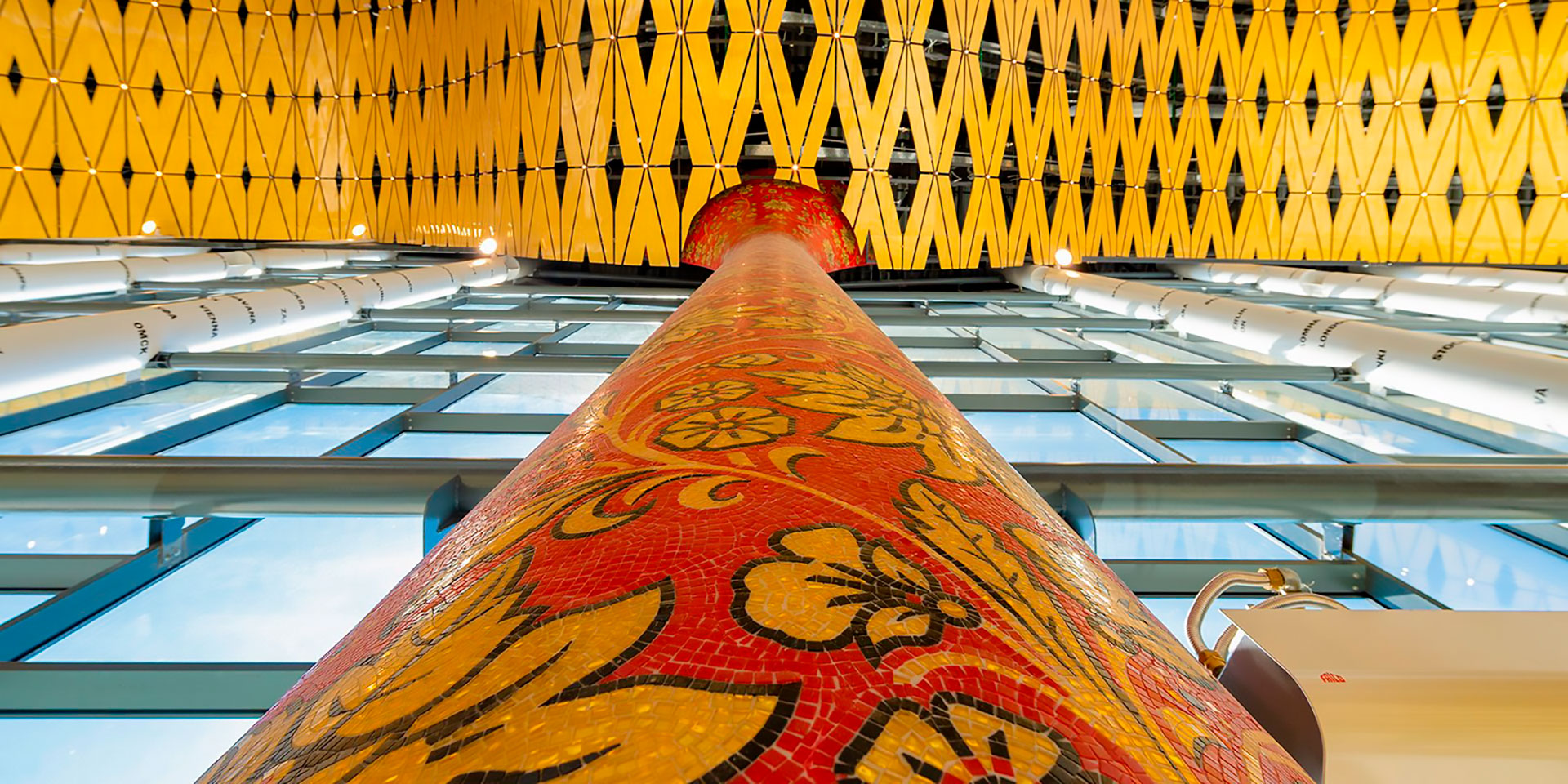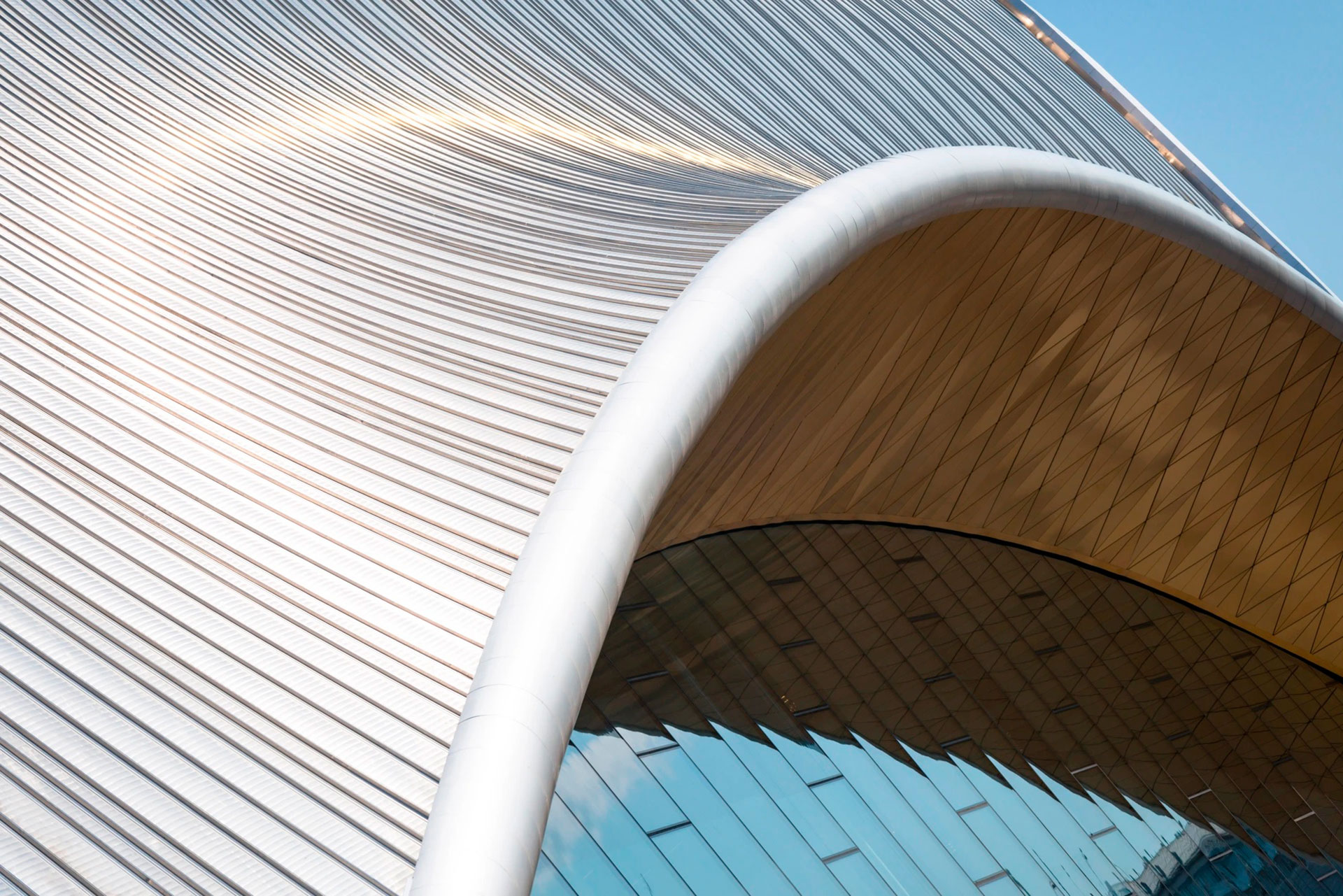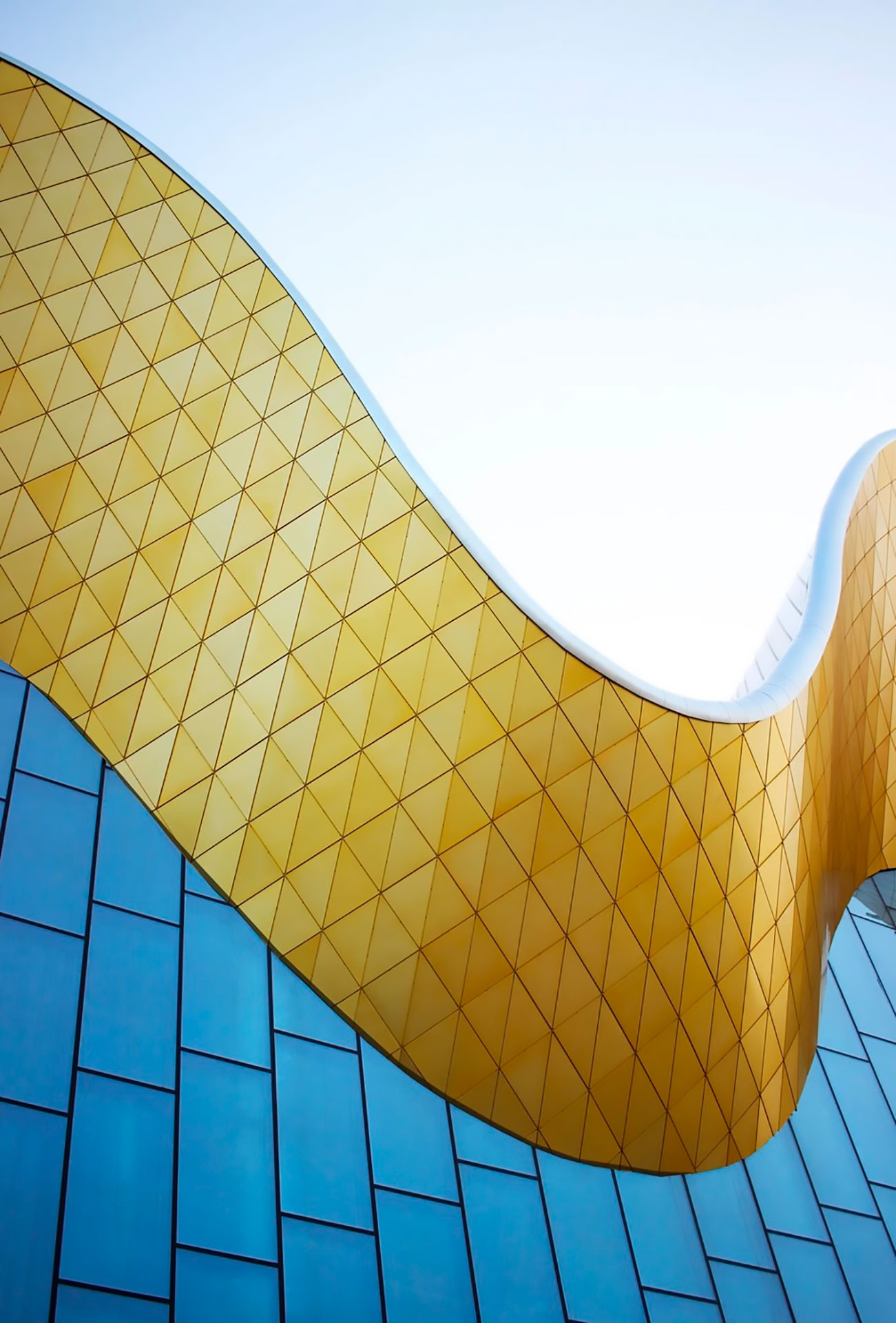Rhythmic gymnastics, with more than 80 years of history, an Olympic sport that was born in Russia, has a new home since, in 2019, the Irina Viner-Usmanova Rhythmic Gymnastics Palace opened its doors. The building was built on the initiative of the current president of the Russian Rhythmic Gymnastics Federation, Irina Viner-Usmanova, after whom it is named. Worthy of a sporting discipline as spectacular and beautiful as rhythmic gymnastics, the venue has received numerous awards, including the 2019 Grand Prix for the best aluminium project, awarded by the Alum Forum (International Forum for Aluminium in Architecture and Construction), the 2020 Architecture Award of the city of Moscow for the best sports and leisure facility, and the latest, in September 2020, for the best sports and cultural infrastructure, awarded by the MIPIM (International Market of Real Estate Professionals), which has been held in Cannes, France, since 1990.
Located in the Luzhniki complex, Moscow, the Irina Viner-Usmanova Palace is a four-storey facility, with a total area of 25,700 m2, for an audience of 4,000 spectators. It has a competition court, training rooms, spaces for journalists and juries as well as spectators, recreation and recovery rooms for athletes, and administration offices. Its facilities include a hotel for athletes. In addition to training sessions, which can be held in two simultaneous sessions per day, the space can also be used for concerts and regional or international competitions.
The Moscow architectural firm Creative Production Union PRIDE (CPU PRIDE) is responsible for the building’s design. The line of a rhythmic gymnastics ribbon waving in the air was the main inspiration. The studio used it to shape the roof, a decisive detail in the overall configuration, which gives the sports hall its unique iconic character. The project’s complex construction planning and the coordination between architects and specialist engineers was carried out using BIM technology. “The BIM environment helps to avoid human errors,” explains Vitaliy Krestianchik, chief architect at CPU PRIDE, adding: “The first model we received from the engineers (…) contained 1,800 collisions, which, by the way, is not that many. With 2D drawings, it would simply be impossible to detect all those conflicts”.
You can enjoy a drone’s-eye view of the fantastic Palace here video:











